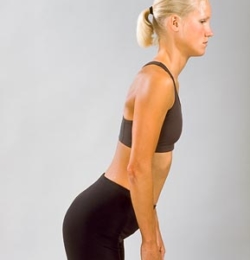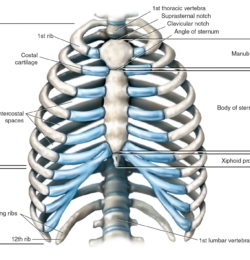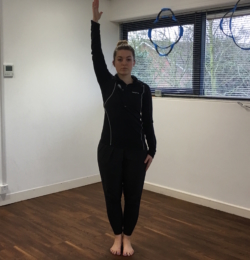How Can I Tell If It Is Pilates?
A handout to share with class members.
There are many classes using the title Pilates within their class title and description. This can be confusing for class members and those who want to attend Pilates so that they can reap the benefits of the Pilates method.
It is important that to distinguish between Pilates style classes, and classes taught using the Pilates Method. Many class members are referred to Pilates as a beneficial form of exercise to help them correct pelvic floor, posture, back, joint, breathing or specific movement problems. If they attend a class that is not taught using the method then they will not gain the necessary benefits and even more importantly, they may aggravate structural problems further.
 There are many classes that are taught in more of a fitness, dynamic movement way that use the title Pilates, but the exercises are not taught or executed using the 6 principles of the pilates method. These classes bear more of a resemblance to body conditioning than they do to classical mat Pilates. These classes are often fun and dynamic and improve general fitness and certainly have a place in our timetable choices but they should be very clear that they are not taught using the Pilates Method.
There are many classes that are taught in more of a fitness, dynamic movement way that use the title Pilates, but the exercises are not taught or executed using the 6 principles of the pilates method. These classes bear more of a resemblance to body conditioning than they do to classical mat Pilates. These classes are often fun and dynamic and improve general fitness and certainly have a place in our timetable choices but they should be very clear that they are not taught using the Pilates Method.
Why?
These classes are hard to differentiate from Pilates classes for members because they use the same titles for exercise positions as the Pilates classical mat positions. The first point of clarification is that it is not the exercise positions that make a class Pilates. i.e. The Teaser exercise is seen in other workouts such as ‘Boat’ in Yoga or ‘V’ sit in other exercise programmes. What makes it Pilates is when taught within the 6 principles of the classical method. Any exercise can be taught within method and it becomes a Pilates method exercise. This gives us a world of content choice.
What is the method and how is it applied?
Joseph Pilates identified the method of teaching exercise using the science of ‘control’ and breath. Practiced fully, Pilates benefits include, “Increased lung capacity and circulation through deep breathing, strength and flexibility, particularly of the abdomen and back muscles, coordination, muscular and mental strength, posture, balance, and core strength” (Joseph Pilates). These benefits are lost if the method is not used during teaching. It is impossible to use the method when the exercises are speeded up to a common fitness body conditioning speed.
The Joseph Pilates Classical Mat Method Explained.
Centering.
Centering is the focus point of the Pilates classical method and links the 6 points of the method. All movements begin at the centre of the body and flow out to the limbs. Not dissimilar to core training in other fields. However linked to all the principles it becomes very different.
The three most unstable areas of the body are the pelvis, the spine and the shoulder girdle. Often when we move the body we engage the global mobilising more superficial muscles to initiate a movement without using the local stabilizing muscles which stabilize these areas first. The pilates method teaches using the power of stabilisation throughout movement.
The local stabilising muscles form a tube affect around the spinal column, into the pelvic floor and up to the diaphragm. The connection from the diaphragm to the pelvic floor, through the Iliopsoas muscle group forms a connection from the top to the bottom. At the sides we have Internal Oblique with Transverse Abdominus acting as a lateral stabilizer at the front. Through the back we have Multifidus supporting the spine from the Pelvis to the base of the scull together with the deep Spinalis muscles and Quaratus Lumborum supporting the spine laterally. These are just a few of the muscles involved. Centering involves techniques of firing these muscles and engaging them in their support role before during and after a movement. This key principle takes focus and concentration.
Concentration
To engage these muscles through centering takes intense focus, concentrating your mind in engagement and use of the power. Many techniques are used by teachers to visualise engagement until the neural system can do this habitually with unconscious competence.
Breathing
 By engaging centering effectively from the pelvic floor through to the diaphragm, setting the shoulder girdle and pelvic postures, we effectively free up the floating ribs (11th & 12th lower ribs) which allows you to inhale & exhale more deeply. This allows the rib cage to push out to 360° allowing the feeling of lateral, deeper breathing. This is more effective and less energy intense. Any drop of the shoulder girdle into protraction, restricts the lower rib movement and creates a dysfunctional breathing pattern.
By engaging centering effectively from the pelvic floor through to the diaphragm, setting the shoulder girdle and pelvic postures, we effectively free up the floating ribs (11th & 12th lower ribs) which allows you to inhale & exhale more deeply. This allows the rib cage to push out to 360° allowing the feeling of lateral, deeper breathing. This is more effective and less energy intense. Any drop of the shoulder girdle into protraction, restricts the lower rib movement and creates a dysfunctional breathing pattern.
Control
Using the power of centering, concentration and effective breathing control allows you to control a movement. It allows you to recruit movement in effective, functional and less energy intense patterns. This allows movement to become precise.
Precision
 I always think of precision of movement in a surprising way. Shouldn’t all exercise be taught with precision? Precision to me, means that you can affect a movement that is precise, using centering, concentration and breath to control the movement. When progressing movement and loading movement more intensely it is important that we are able to maintain the centering & control using a ‘precision marker’ to help us know when we have lost the centering and control. i.e. If we reach an arm above our head, can we control our back, so one part of our body moves precisely and the remaining muscles functionally support the body, initiating a functional movement pattern rather than a dysfunctional one.
I always think of precision of movement in a surprising way. Shouldn’t all exercise be taught with precision? Precision to me, means that you can affect a movement that is precise, using centering, concentration and breath to control the movement. When progressing movement and loading movement more intensely it is important that we are able to maintain the centering & control using a ‘precision marker’ to help us know when we have lost the centering and control. i.e. If we reach an arm above our head, can we control our back, so one part of our body moves precisely and the remaining muscles functionally support the body, initiating a functional movement pattern rather than a dysfunctional one.
With this practice, functional precise movement will eventually become second nature and therefore protecting our skeletal structure in everyday life and correcting dysfunctional movement patterns or postures.
Flow
All of the 6 principles together help you move with flow and efficiency. Think of flow as ‘beauty and grace’. Any movement initiated by an experienced practitioner of that movement looks beautiful. Think of the athlete, gymnast or dancer. With experience and practice their movement looks effortless and easy. The practice of using the 6 principles create the ability to flow movement from the centre of our body to our limbs and flow one movement into another, moving with less energy intense effort. The more we practice the pilates method, the more our movement becomes effective, effortless and easy.
Is this not what all Pilates participants deserve.
In trying to identify a Pilates class that uses the 6 principles of the method, ask yourself the following:
Does the teacher?
- Explain the 6 principles of the method and how they link to your functional movement?
- Use the terms of the 6 principles to help guide your personal movement?
- Teach each exercise in the class using the principles and does the teacher re-enforce the principles ensuring that your movement is based through centering, controlling the body, with precise movement, flowing with good breath control?
- Correct your exercise using precision markers and assists you in centering, control, breath and flow.
- Give you time to concentrate on engaging the method.
- Teach the exercises at a speed that allows you to concentrate on all of these principles and ensure engagement of the principles to gain the benefits?
If you can’t recognise this in the class, then no matter what the title
“IT IS NOT PILATES”. It is body conditioning exercises slowed down.
If you would like to train in the classical mat method, why not consider our Level 3 Diploma in Teaching Mat Pilates. Quote PA1703 if you have read and shared this article and we ill apply a £250 learning voucher to your course fee.
